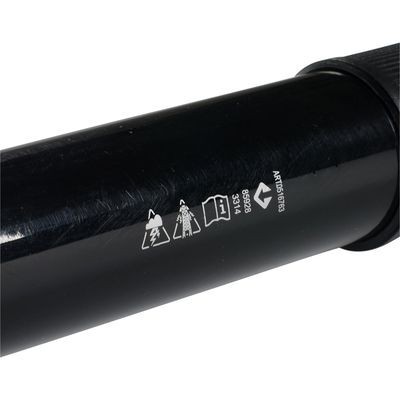That’s good question Steve that gets answered in 2 sections, one answer is the pragmatic “how to” answer and the other one is with my Management Team hat on.
It’s important to remember that what you and me and everyone else reading here finds attractive or interesting about antennas and radio may not be held by anybody else who happens across a SOTA activation in the countryside. That means being considerate with the size and scale of any antennas you rig and the length of time spent at a summit. There’s no hard rule saying how big or how long you can stay, use your common sense! This section of the rules is the important bit.
“Activators must operate with due consideration for other people and wildlife on the hills.
Excessive noise, inconsiderate siting of equipment and antennas, etc. is not acceptable and
potentially brings the Programme into disrepute.”
So if you find a summit with a wind shelter, seating and trig point and you set up a 10m high antenna complete with guying, then commandeer the seating with your station and extra gear and operate for 8 hours to the exclusion of all the other walkers who arrive at the summit, then you are not being considerate. These people they may not comment to the activator but they have contacted the MT in the past.
OK, with the heavy “use your common sense” bit out of the way, what about trigs and fences. Well if you visit a summit that really is seldom visited by anyone walkers or SOTA activators, then trigs are fair game. But if it’s popular you want to setup as far away from the other visitors as feasible (remember the WAB trig award distance and SOTA AZ rules).
Trigs can be used in 2 ways, either the centre hole is available or by lashing to the pillar itself. Many trigs have succumbed to have their centre cap stolen. (You need a BA set of Allen keys, WD40 and a special tool for loosening off the centre cap!) and if you are lucky the centre will not have been stuffed with stones or drinks cans and you can insert your antenna support. Use something to protect the pole from rubbing on the metal and damaging itself.
Lashing to the trig has problems. In England and Wales, the trigs are the classic Hotine Pyramid shape, a truncated pyramid. The problem is when you lean a pole against one side it doesn’t end up vertical. Not an issue if you hang a dipole or such from it for HF. Not really a problem for a vertical either. The bigger issue is trying to get the lashing tight as it tends to ride up the decreasing circumference as the pole moves in the wind. It can be done but is fidly. Paul G4MD (and others) made a trig point wedge that goes between the concrete and the pole to make the pole vertical and lashing work better as the ropes etc. don’t ride up. But it’s something extra to pack, carry and take up space. In Scotland we have a number of Vanessa Cyclinders which have constant circumference and so don’t have this problem.
I’ve been primarily and HF SOTA activator and fences are much more useful. Lashing to a fence post is easy (practice this wearing gloves) and having several runs of fence wire under a 60m/40m sloping V does improve the NVIS performance. If there is a fence I will use it no matter which when the dipole ends up pointing. If there’s no fence and I guy the support, I try to aim the main lobe of the dipole East of South. A low 60m/40m inverted-V is quite omnidirectional TBH, but the 30m option is noticeably directional.
So yes you can use what you find at the summit to support antennas but don’t use them if you will interfere with other visitors enjoyment. Whenever I have been using the trig and others have arrived at the summit I have offered to stop operating or move. Nobody has ever asked me to do so but I always give them chance to comment.





